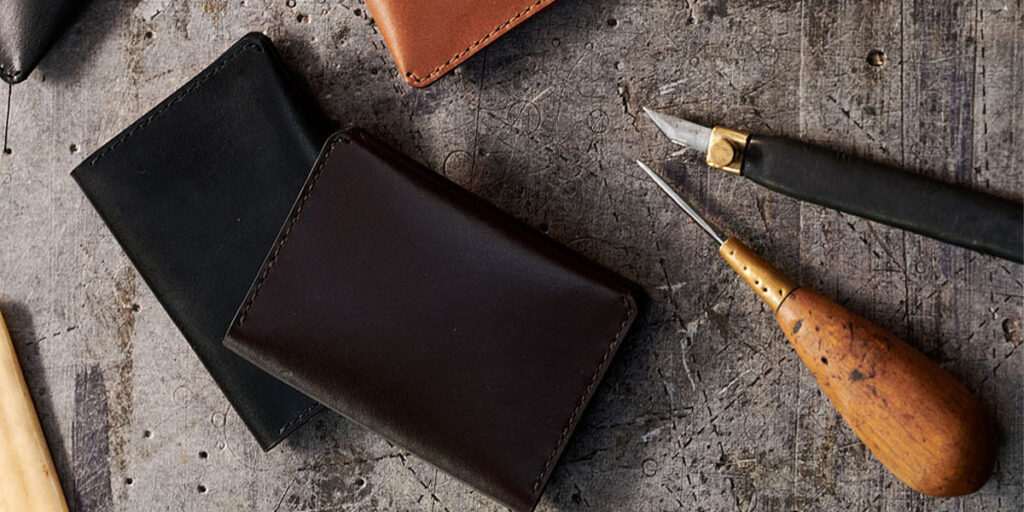Wallets have been an essential accessory for centuries, providing a convenient and secure way to carry our valuables. Over time, wallets have evolved in design, functionality, and materials, reflecting the changing needs and preferences of individuals. In this article, we will explore the fascinating journey of wallets and how they have transformed throughout history.
Early Beginnings
The concept of wallets can be traced back to ancient civilizations. In ancient Egypt, people used small pouches made of cloth or leather to hold their belongings. These early wallets were simple and served the basic purpose of carrying essential items like coins and personal identification.
As societies advanced, so did the wallets. In medieval times, wallets became more structured and featured compartments to organize different types of currency. They were often made of leather and adorned with intricate designs, showcasing the craftsmanship of the era.
During the Renaissance period, wallets took on a more decorative and fashionable role. They were embellished with embroidery, gemstones, and metalwork, becoming a symbol of wealth and social status. Wallets became an accessory that showcased personal style and sophistication.
The Rise of Paper Currency
The introduction of paper currency in the 17th century revolutionized the design of wallets. As banknotes became the primary form of currency, wallets needed to accommodate the larger and more flexible bills. Wallets began to feature additional compartments and folding mechanisms to store banknotes securely.
During this period, wallets became a symbol of status and wealth. Elaborate wallets made of fine materials, such as silk or velvet, adorned with embroidery or precious metals, were popular among the upper class.
In the 19th century, the Industrial Revolution brought about new manufacturing techniques and materials. Wallets became more accessible to the middle class, and mass production allowed for a wider range of styles and designs. Leather became the preferred material for wallets due to its durability and flexibility.
The Modern Wallet
The 20th century brought significant advancements in wallet design and manufacturing. The emergence of new materials and technologies allowed for more practical and functional wallets.
Bi-fold wallets became popular during the mid-20th century. They featured a simple folding design, allowing for easy access to cards and cash. Bi-fold wallets offered a balance between functionality and compactness, making them a favored choice among many individuals.
With the rise of credit cards and identification cards, cardholder wallets gained popularity. These wallets were designed specifically to hold cards securely and organized. They often featured multiple card slots and a slim profile, catering to the needs of individuals who relied less on cash and more on cards.
The advent of digital technology in the late 20th century led to the emergence of digital wallets. Digital wallets allow individuals to store and manage their payment information electronically, eliminating the need for physical cards or cash. This innovation revolutionized the way we make transactions and further reduced the reliance on traditional wallets.
Contemporary Wallets
Today, wallets come in a wide variety of styles, materials, and designs to suit different preferences and lifestyles. From minimalist wallets made of sleek metal or slim leather to multifunctional wallets with built-in RFID protection and smartphone compartments, the options are endless.
Sustainable and eco-friendly wallets have also gained popularity in recent years. Materials like vegan leather, recycled fabrics, and organic fibers are being used to create wallets that align with the principles of sustainability and ethical consumption.
The Future of Wallets
As technology continues to advance, the future of wallets is likely to be shaped by digital innovations. Contactless payment methods, biometric authentication, and wearable technology may redefine the way we carry and access our financial essentials.
While digital wallets are on the rise, the charm and practicality of traditional wallets are unlikely to fade away completely. The physical act of taking out a wallet and counting cash or flipping through cards provides a tangible connection to our finances and personal belongings.
Conclusion
The evolution of wallets reflects the ever-changing needs, advancements in technology, and shifts in fashion and lifestyle trends. From the simple pouches of ancient times to the sophisticated and multifunctional wallets of today, wallets have become an integral part of our daily lives.
If you want to learn more about the latest wallet trends and styles, check out our blog here.
.
.
Introducing West where slim wallets are reinvented. Born in Germany with the mission of making style functional, we craft premium quality vegan leather into slim lifestyle essential. Check out our collection of wallets today and start your journey towards style and comfort!

